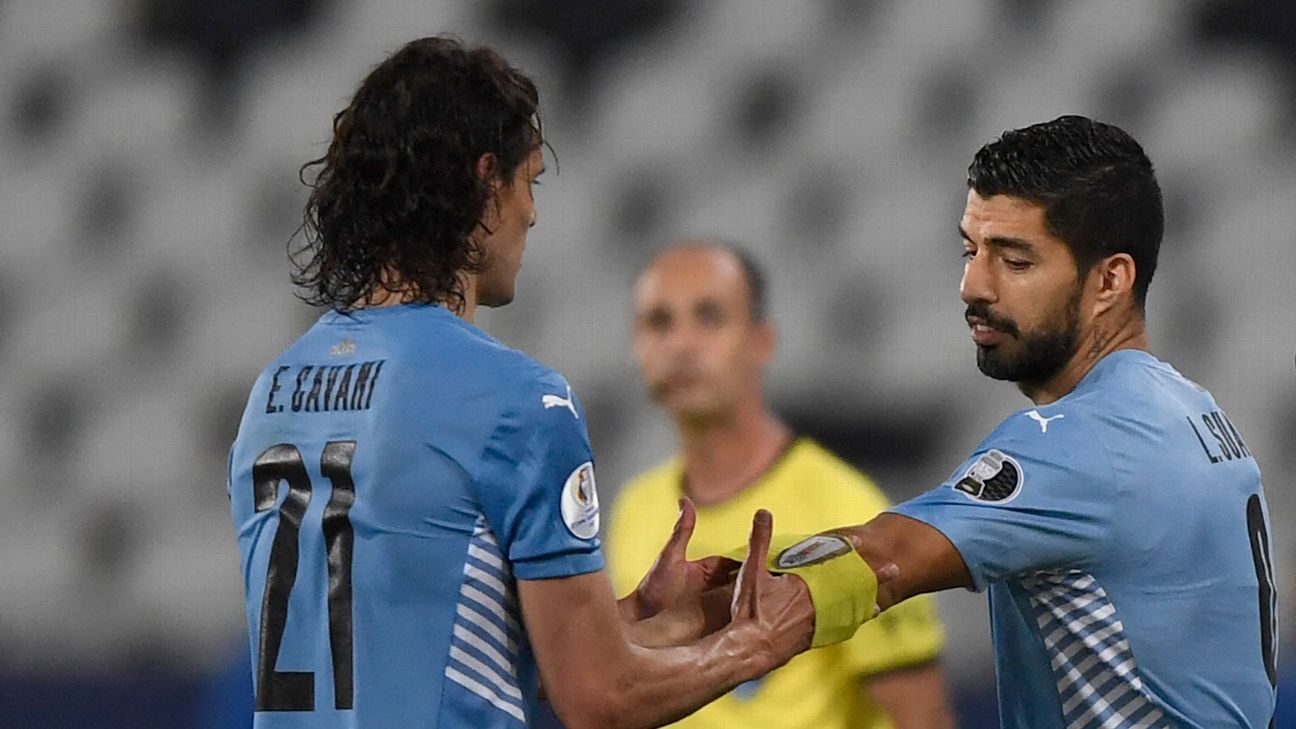Do Suarez, Cavani work together? How about Nunez? Uruguay have big World Cup questions

Gab Marcotti and Julien Laurens discuss rumours that some Champions League games could soon be played outside of Europe. (1:06)
In these last FIFA dates before the World Cup squads are announced, most of the coaches are merely ticking over, enjoying the chance to get the group together and looking at fringe options, with the basic plan for Qatar already well established.
This should be especially true of the South Americans. Since the middle of 2019 they have played two versions of the Copa America plus eighteen rounds of World Cup qualifiers — more than enough competitive games to whip their team into shape. That is certainly true of Brazil, Argentina and Ecuador.
But it does not apply to Uruguay. Diego Alonso was only appointed as coach at the end of last year. He still has a lot of hard work to do and a lot of big decisions to take, which makes Uruguay’s friendlies against Iran and Canada among the most interesting encounters of the next few days.
– Stream on ESPN+: LaLiga, Bundesliga, MLS, more (U.S.)
Alonso was brought in after the end of the epic 15-year reign of Oscar Washington Tabarez, under whose calm guidance Uruguay returned to football’s top table. In hindsight, it might have been better had Tabaez stepped down after Russia 2018. But it is easy to understand why he was seduced into staying.
The road to Qatar would coincide with the footballing maturity of the new, bright midfielders — Federico Valverde and Rodrigo Bentancur — and it would also be a last hurrah for the veteran pillars of his side — the likes of Luis Suarez, Edinson Cavani and Diego Godin, plus Fernando Muslera and Martin Caceres. On paper it looked wonderful. On the pitch there were problems.
The key question — one that flummoxed Tabarez and now confronts Alonso — is how to get the balance right. How many of the veterans can be fielded together?
Tabarez never found an answer, and was further undone by a combination of injuries and a cruel run of fixtures. Uruguay seemed well on course for Qatar until they had to play Argentina home and away, and Brazil away, plus the dreaded trip to the extreme altitude of La Paz to face Bolivia. Four defeats, three of them heavy, forced a change.
The fixtures were kinder to Alonso, who sealed Uruguay’s World Cup place with wins over Paraguay, Venezuela and Peru. The group opponents in Qatar — South Korea, Portugal and Ghana — will prove much more challenging.
Alonso is well aware that the team that he selected to qualify for the World Cup will be different from the side he sends out in the tournament. The next few days should make those differences clearer in his mind.
Uruguay’s captain, leader and centre-back, Godin, is clearly in decline, and has run into physical problems that have ruled him out of this month’s games. Earlier this year Alonso made sure that Godin was well-protected on the field. But does he even need to be selected?
Barcelona‘s Ronald Araujo could be moved from right back to his more natural centre-back position. A partnership of Araujo with Jose Maria Gimenez looks interesting. Gimenez has had to pull out of these games with an injury, giving Alonso the chance to give plenty of defensive responsibility to Araujo as the senior centre-back in these two matches. If fit, Godin will surely go to the World Cup. But perhaps as substitute rather than first choice.
And who will play in goal? Muslera was injured at the start of the year, and the home-based Sergio Rochet stepped in. He is a competent goalkeeper. But there is a stiffness about him that means he will never be world class. Will Muslera be recalled, or does Alonso keep faith with Rochet?
At the other end of the field, Cavani has been left out of this squad. He is being given time to regain match fitness at Valencia, and will surely go to the World Cup. But in what capacity? There is a growing recognition that Uruguay can no longer field Cavani and Suarez together — one of them needs to wait on the bench.
But what about Darwin Nunez? Can he play alongside one of the veterans? Or are Uruguay better off abandoning 4-4-2? There is a feeling that Uruguay’s midfielders — probably the best part of the current side — function better with another system, one which allows them to have three in the centre of the pitch, plus a flying winger to stretch the opposing defence.
With two months to go to the big kick off, Uruguay have some serious decisions to take — not just about personnel but also regarding the shape and the overall idea of the side. Warm-up games against Iran and Canada have seldom been so important.